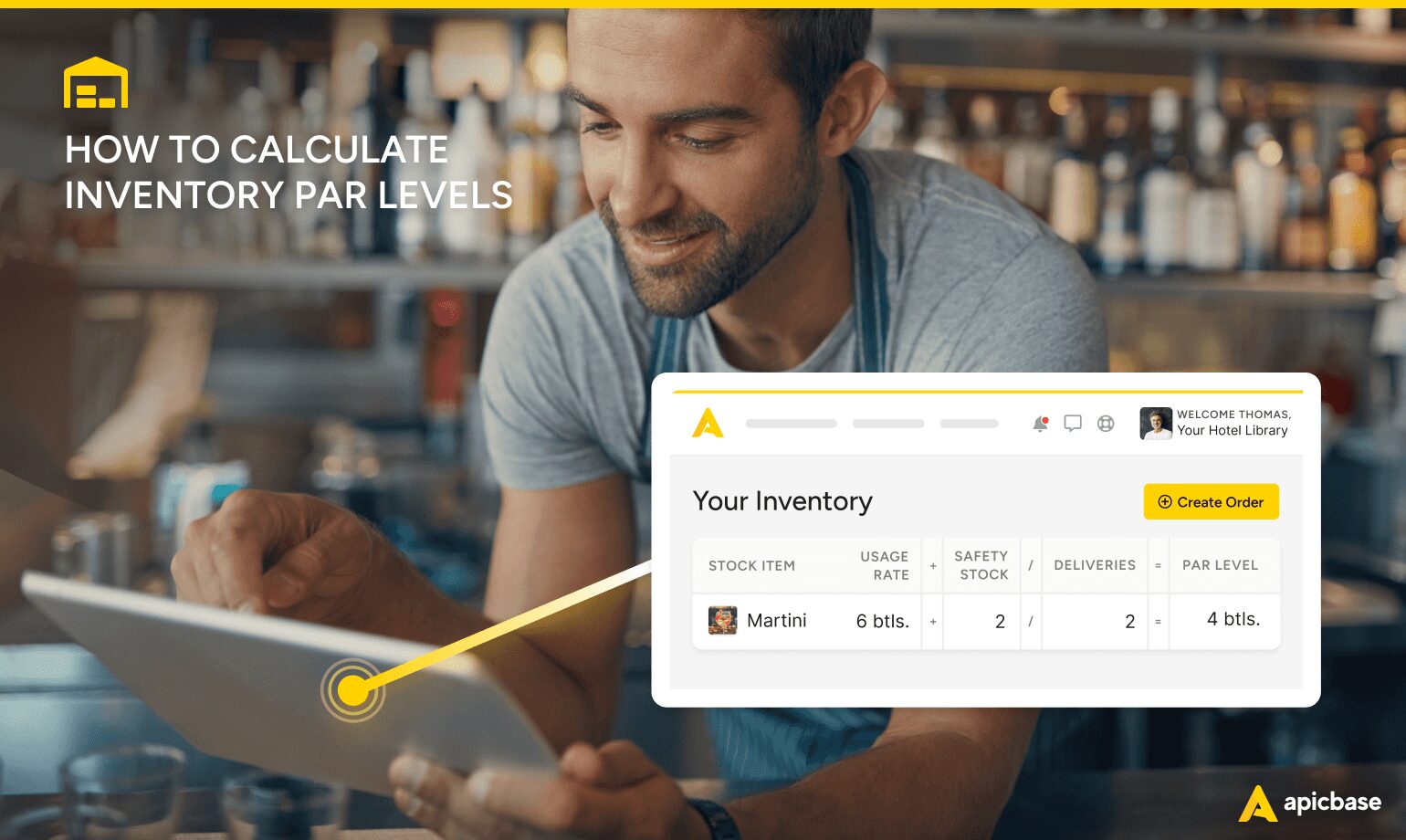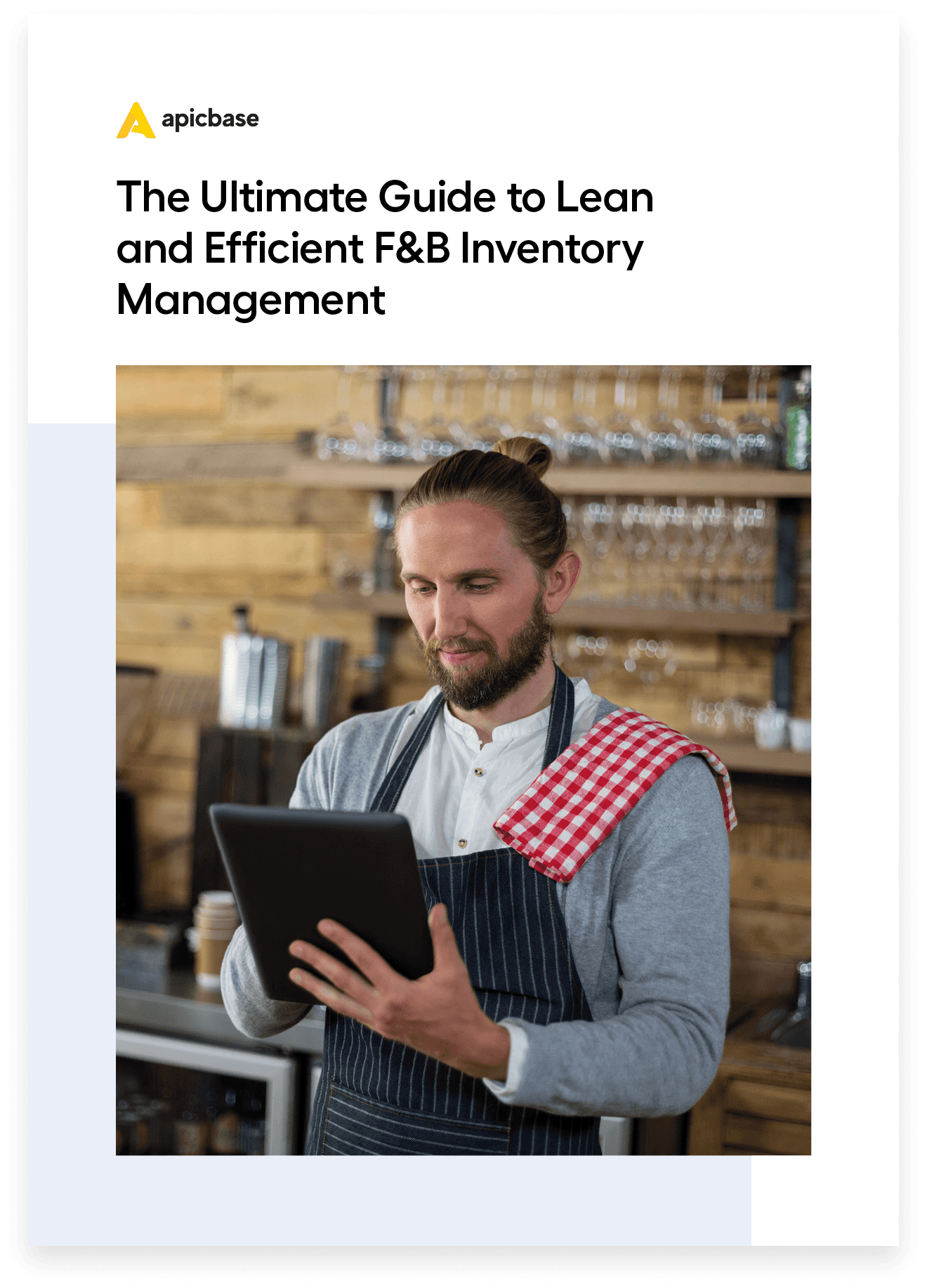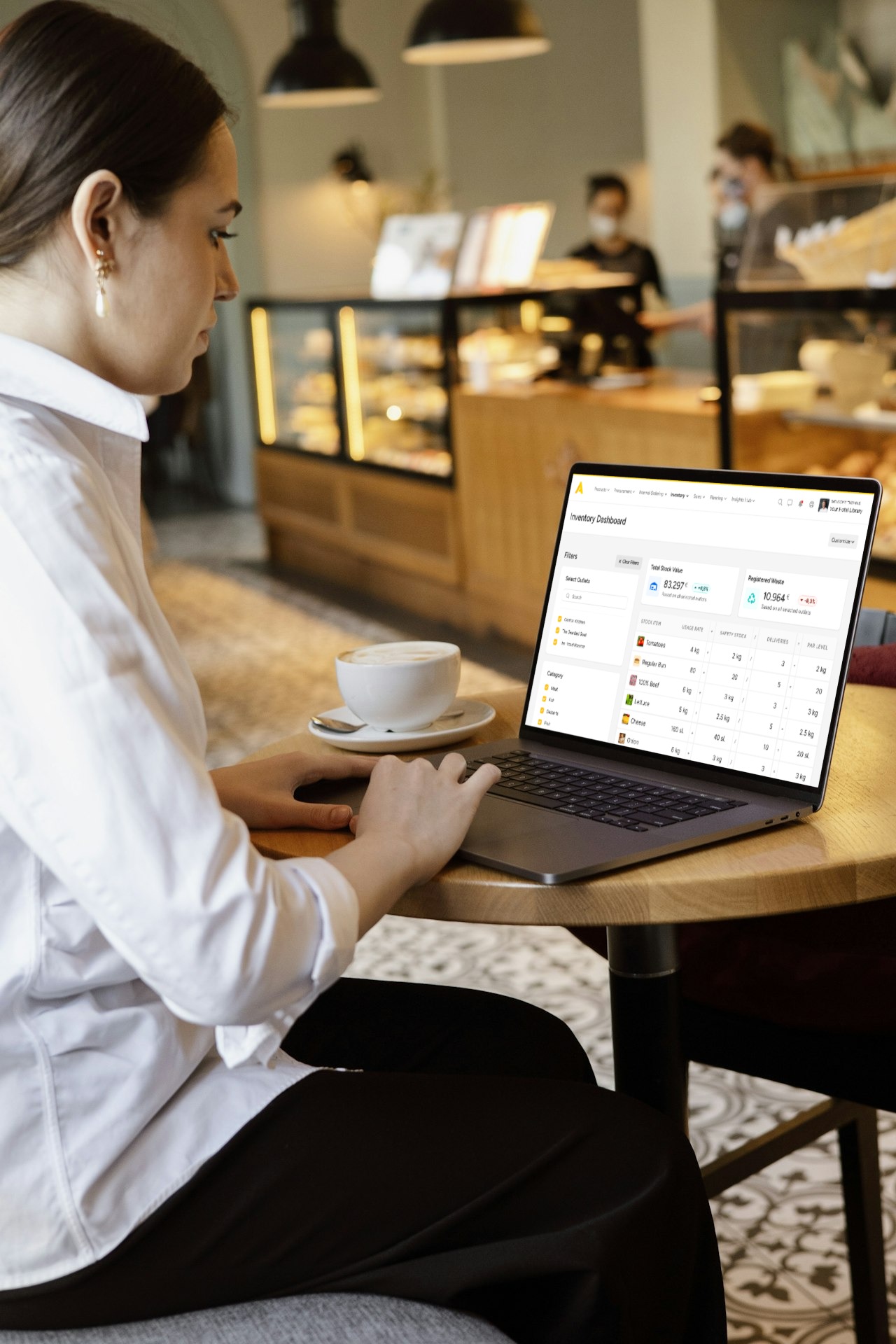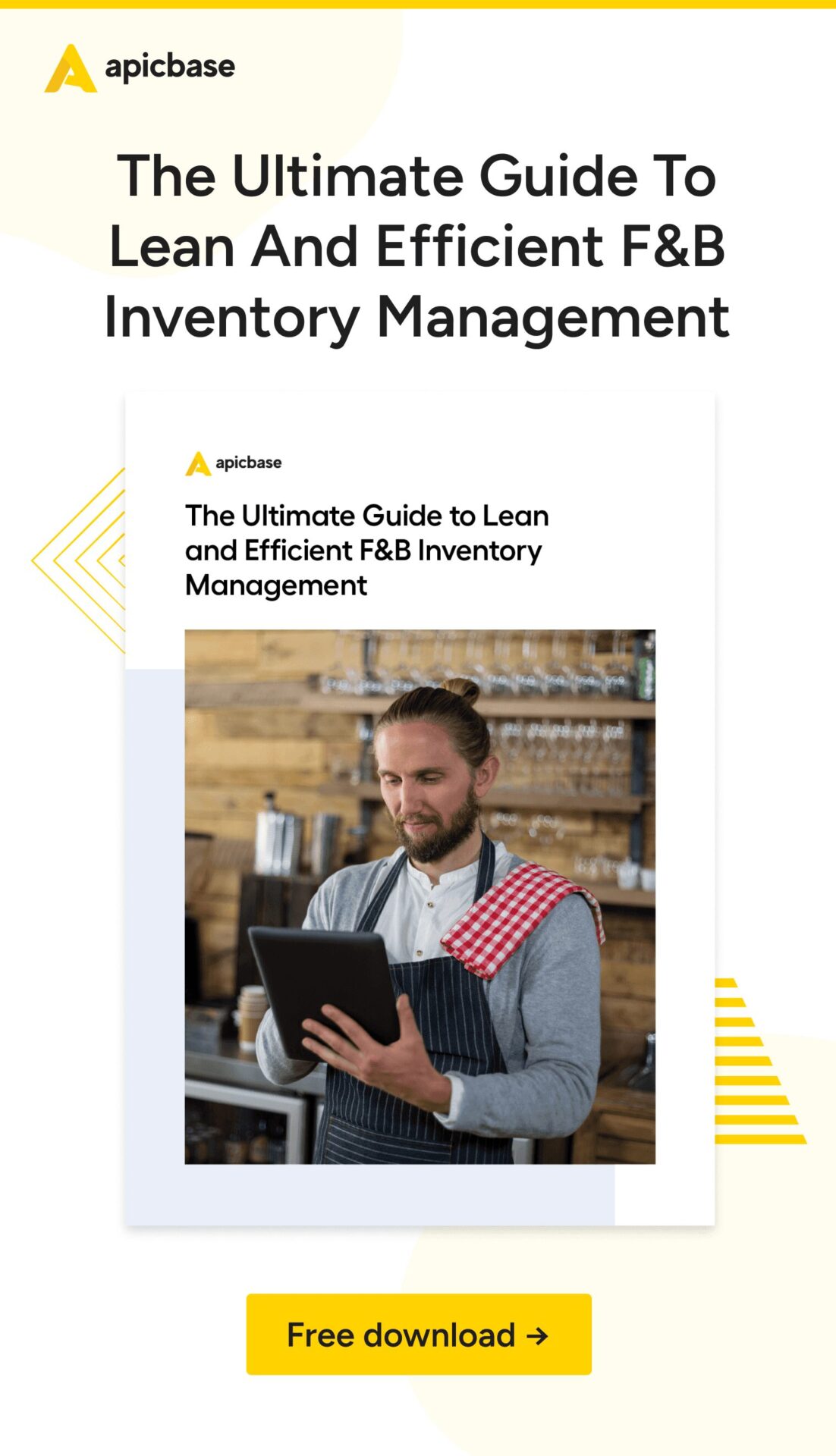Effective inventory management is essential for a restaurant’s profitability, particularly in multi-outlet operations, where errors and discrepancies can quickly multiply, leading to significant losses.
Excess inventory can lead to food waste, and inadequate inventory can disrupt kitchen production. That’s why restaurants need to understand and calculate PAR-level inventory — the ideal amount of stock for meeting demand without overstocking.
Optimising PAR-level management takes the stress out of purchasing and frees up your time to focus on other efforts. It also ensures you never run out of ingredients and can serve every item on your menu without disruption.
In this post, we’ll explore the benefits of PAR-level inventory and how to calculate it. We’ll share best practices for managing PAR-level inventory and explain how inventory management software can simplify this process.
What Are Inventory PAR Levels?
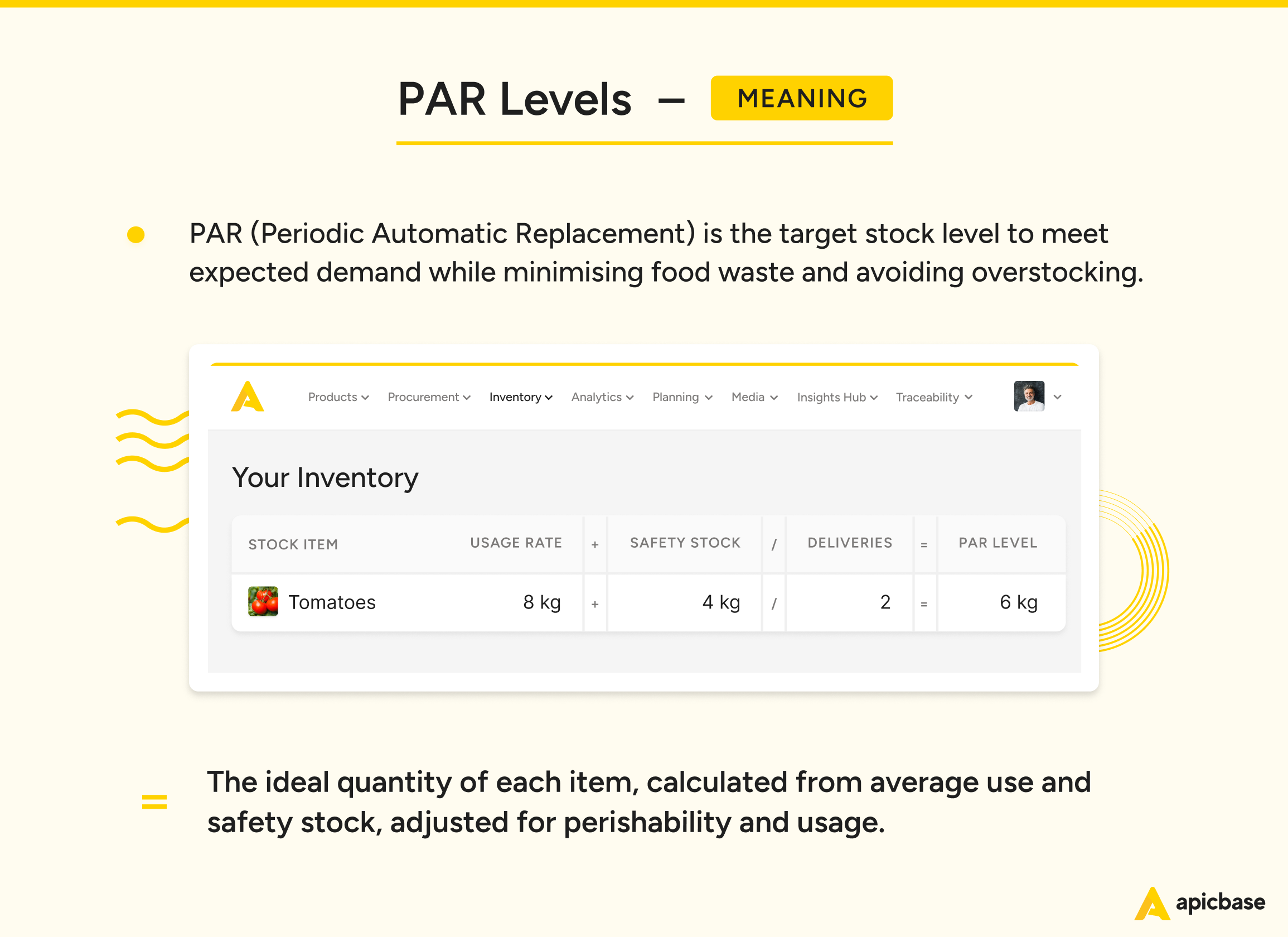
PAR (Periodic Automatic Replacement) or PAR-level inventory is the target stock level necessary to meet expected demand while minimising food waste. It ensures you have enough ingredients to handle normal service and unexpected spikes in demand without overstocking, which can lead to spoilage.
PAR levels are set by considering the average consumption of each ingredient over a given period and adding a buffer (safety stock) to cover sudden demand surges. Safety stock levels, often around 25%, are adjusted for each item based on its perishability and usage in different dishes.
PAR level vs. reorder point
PAR level and reorder point (ROP) are related but distinct concepts in restaurant inventory management. The PAR level is the ideal stock needed to meet demand and minimise waste. It ensures smooth operations, even during demand surges.
The ROP is the inventory level that triggers a new order. It is calculated using lead time and average daily usage. When an ingredient or product hits the ROP, an order should be placed to bring levels back to the PAR. This keeps the supply steady without overstocking or running out.
For multi-unit restaurant businesses, calculating the PAR level is crucial to maintaining your brand reputation and offering the best customer experience at all locations. It also helps in some more surprising ways, which we’ll get into below.
The Benefits of PAR-Level Calculations
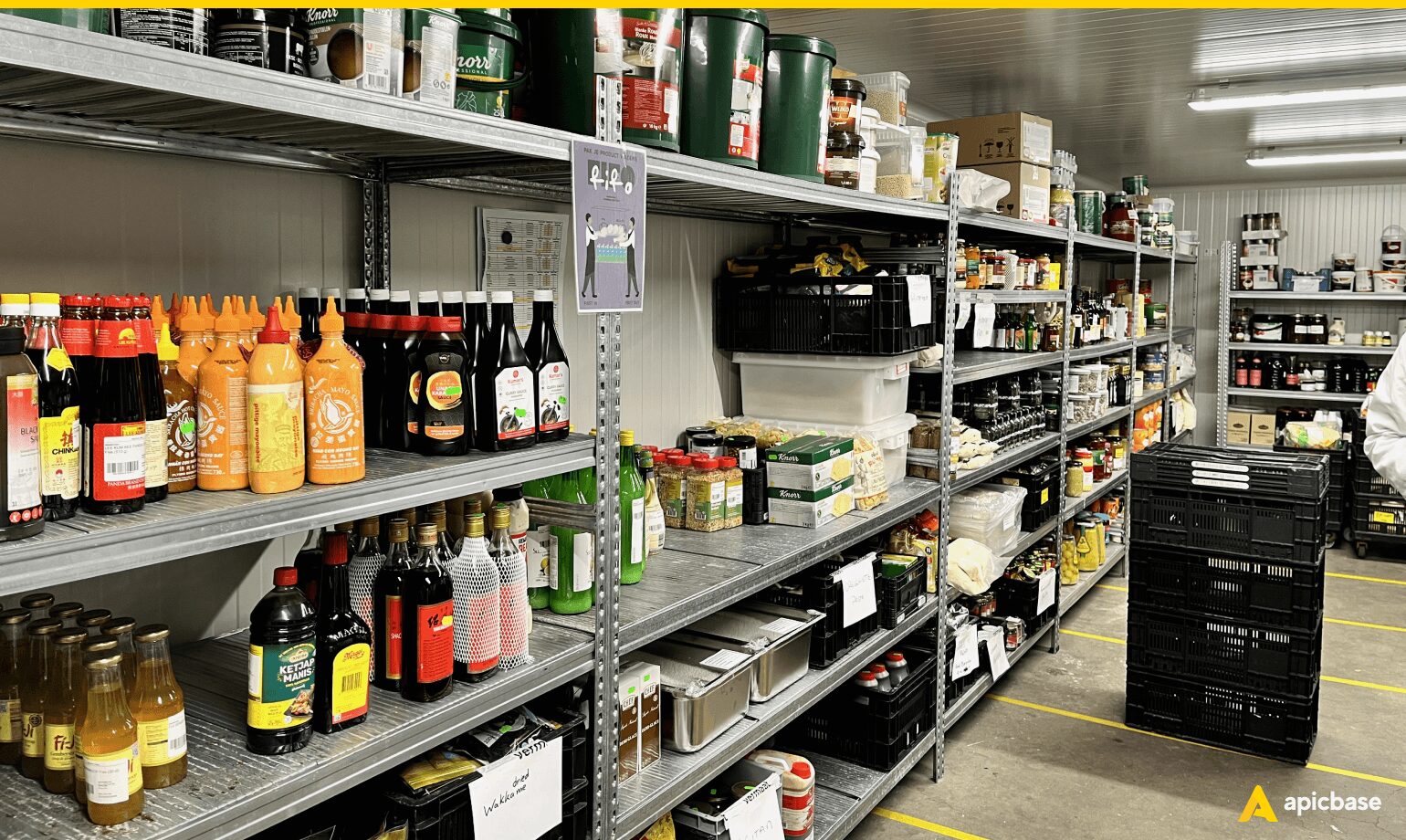
The main benefit of optimising PAR level is that you have extra inventory to meet unexpected demand, but not so much stock that you risk losing money due to food waste.
Let’s look at some additional benefits of calculating PAR levels for multi-unit restaurants.
Improve customer satisfaction
For a customer, there’s nothing more disappointing than turning up and ordering your favourite dish at a restaurant only to be told it’s sold out. It not only disappoints the customer at the time, it also undermines confidence that your restaurant can deliver on its promises in the future.
PAR-level management ensures you always have ingredients on hand. You can fulfil customer orders and keep them coming back for more.
Increase profitability
When you’re running a multi-unit food business, minor mistakes can add up to big problems. For example, if you calculate the PAR level for an item and apply the same formula to all locations without looking at each unit’s sales data, you could unintentionally cause overstocking.
Conversely, improving your PAR-level inventory management quickly adds up to massive cost reductions. And with inventory management software, you can easily avoid errors in PAR-level calculations.
Identify trends and opportunities
Successful restaurateurs are always looking for a competitive edge — what they can do today to stay ahead of the competition for the coming years.
Closely monitoring PAR levels helps you spot trends and ordering patterns early, enabling you to optimise your menu and take advantage of changing customer preferences.
You might notice that your PAR level for chicken breasts is increasing at your busiest location, for example, and realise that customers are ordering more chicken tenders. You can then capitalise on this trend by creating and promoting a chicken tenders special to increase sales at your other stores.
How to Calculate PAR Level for Multi-Site Restaurants
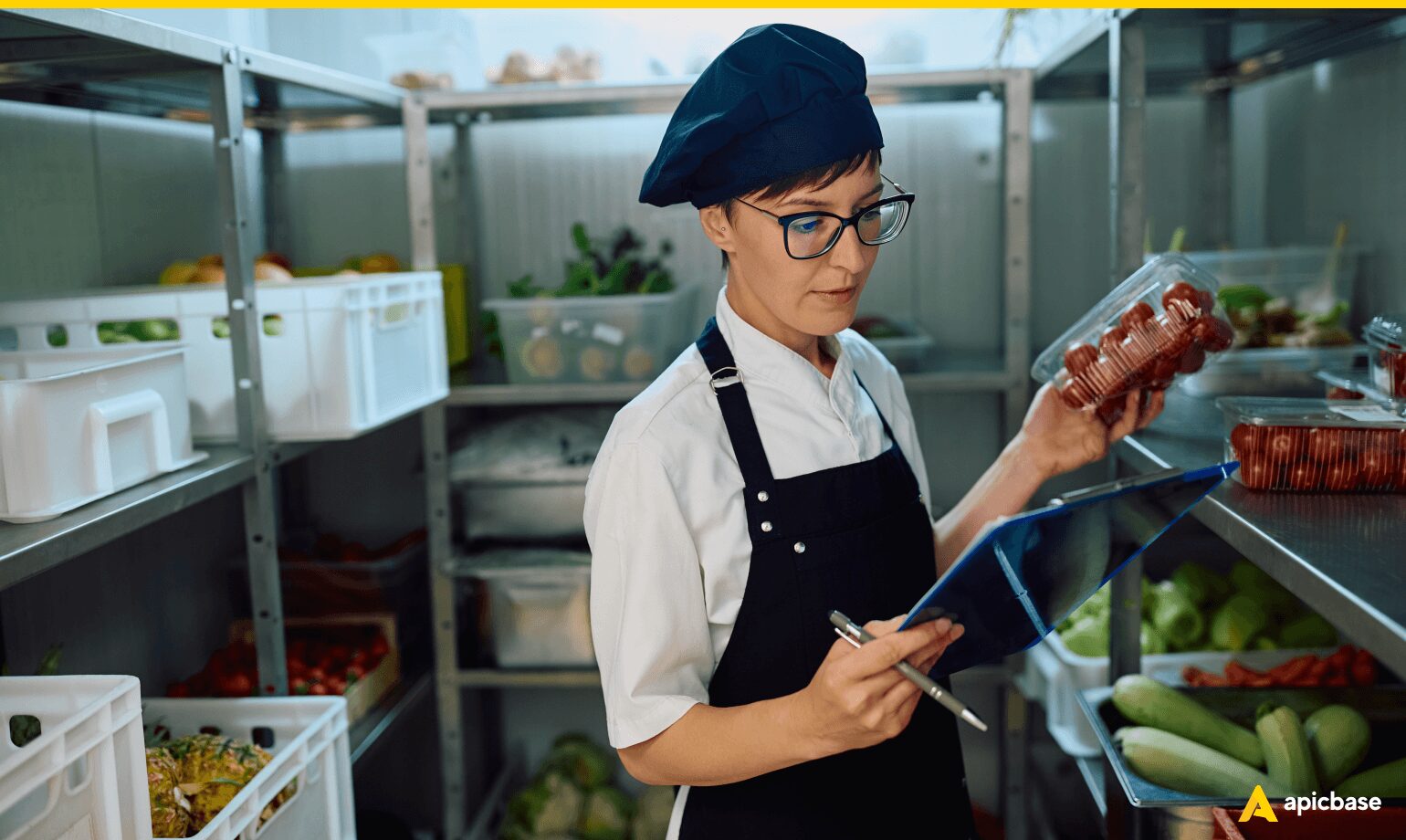
Now that we understand the importance of PAR levels and reorder points, let’s explore the practical steps to calculate them.
1. Determine lead time
You need to know the lead time for every ingredient to calculate PAR level. Lead time is the time that elapses from the date of inventory purchases to delivery. It’s essential to know the lead time for each item to ensure you have enough stock to cover the demand until the next delivery arrives.
For example, if the lead time for your order of bacon is two days, you must ensure you have enough bacon for the next two days when placing your order.
2. Estimate usage rate
A restaurant’s usage inventory turnover rate is the average amount of each inventory item used during a specific time. To estimate the average inventory usage rate, review your sales and inventory data and calculate the average daily or weekly consumption for each item. The usage rate tells you how much stock you need to meet demand.
For the sake of this example, assume bacon is only used for one dish: the cheese and bacon burger.
Your sales reports show that you usually sell 40 burgers each day, equating to 40 rashers of bacon or 1.6 kg of bacon.
So, a 1.6 kg per day usage rate means you can estimate you will use 3.2 kg of bacon over the next two days.
3. Calculate safety stock levels
Safety stock — your extra inventory for unexpected demand or supply chain issues — is part of your PAR-level calculations. To calculate this figure, account for delivery scheduling, seasonal fluctuations in sales numbers, and the shelf life of ingredients.
Let’s say the shelf life of bacon is seven days. You need enough in stock to last until the delivery but not so much that it spoils. Given that your supplier is reliable, you know you count on delivery every other day. You estimate 1 kg of safety stock will cover you even if demand increases.
4. Account for unit location
Never assume that lead time and usage rate are the same for every location. Review your sales data to determine whether you need to change your PAR level formula for other units.
5. Account for the number of deliveries per week
To calculate your PAR levels, you have to know how often each product is delivered. For example, fresh produce has daily deliveries, but drinks arrive only once a week. How often deliveries happen impacts how much stock you need to keep on hand.
The Formula for Calculating PAR-Level Inventory
Putting all the steps together, here’s the formula for calculating your inventory PAR levels:
PAR level = (Weekly Inventory Usage Rate + Safety Stock) / Number of Deliveries per Week.

Assuming a weekly usage rate of 11.2 kg, 25% safety stock, and 3 deliveries per week, the calculation for our bacon example is: PAR level = (11.2 kg + 2.8 kg)/3 = 4.7 kg.
This simple calculation demonstrates how PAR levels work. But in reality, PAR inventory management is complex, because you have to calculate PAR level for every ingredient, including herbs and spices.
The Formula for Calculating the Reordering Point
Now, let’s look at the formula for the reordering point. It also uses the usage rate and safety stock but also takes lead time into account. The formula is:
Reordering point = (Average daily usage rate x Lead time) + Safety stock

Let’s say the bacon supplier offers a next-day delivery service. That means lead time is 1. The ROP = (1.6 kg x 1) + 2.8 kg = 3.4 kg.
So, if your bacon stock drops to 3.4 kg, you need to reorder to ensure you don’t run out of stock.
Best Practices for PAR-Level Inventory Management
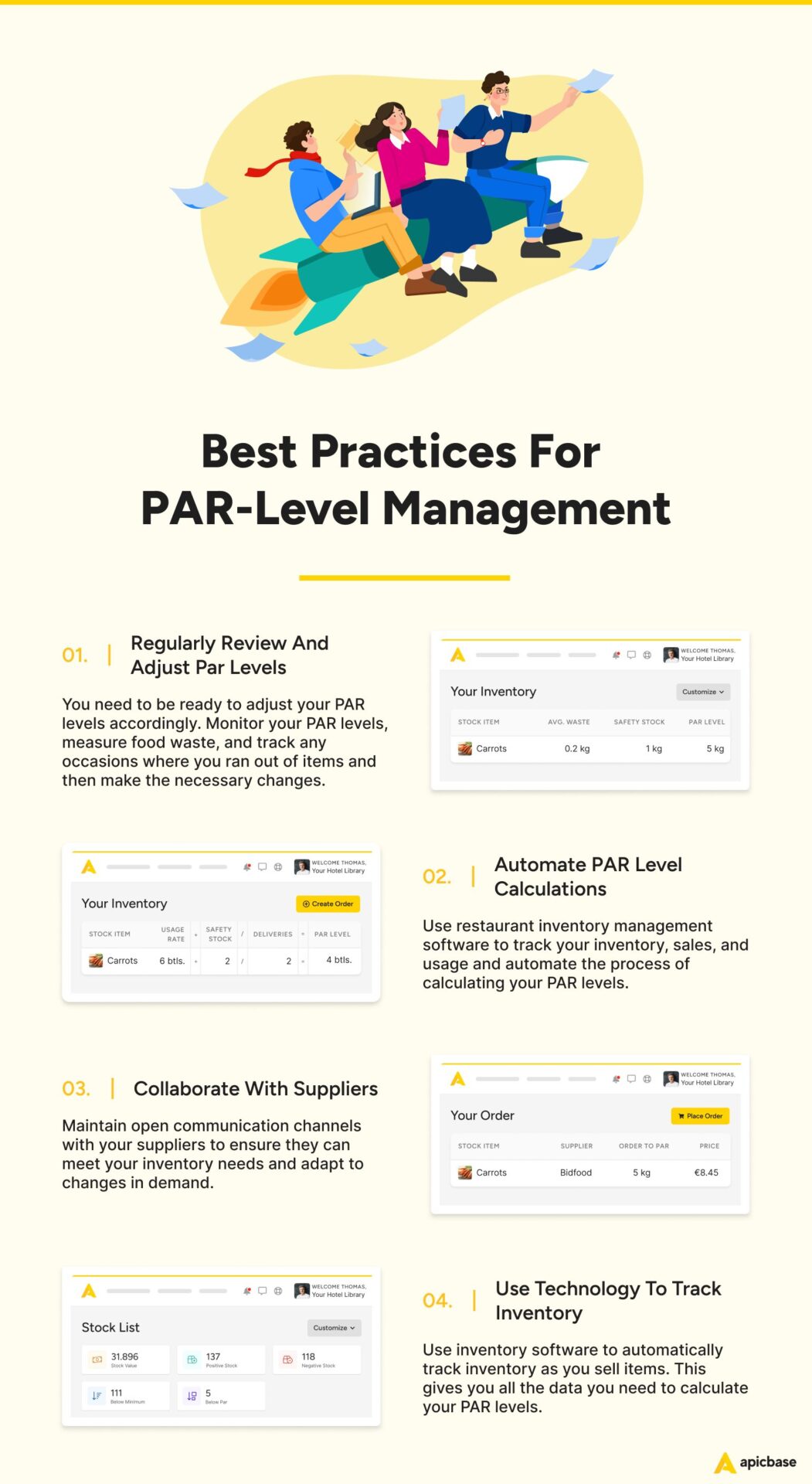
We have defined the steps and formula needed to calculate PAR levels. But in reality, there are many more factors to take into account.
Here are the best practices for ensuring the accuracy of PAR-level calculations.
1. Regularly Review and Adjust Par Levels
As conditions change, you need to be ready to adjust your PAR levels accordingly. Monitor sales reports, track food waste, and note when you run out of ingredients. If you change a recipe, update your PAR level formula based on the new ingredients.
You may also need to change your PAR levels due to supply chain conditions or customer demand. Tracking the adjustments you have made can also reveal trends that you can take advantage of.
2. Automate PAR Level Calculations
Use restaurant inventory management software to track your inventory, sales, and usage and automate the process of calculating your PAR levels. Once all your data is in one system, you don’t have to make PAR-level calculations manually. Inventory management systems can also automate other essential BOH processes.
3. Collaborate with Suppliers
Maintain open communication channels with your suppliers to ensure they can fulfil your PAR-level inventory needs. Building an honest and friendly relationship with your suppliers is a great way to strengthen your procurement process.
Ask suppliers to tell you in advance if they are unable to make a delivery, for example, which allows you to order from a different supplier. Or they might warn you that an item will likely increase in price so that you can make changes to your menu ahead of time and adjust your PAR level accordingly.
4. Use Technology to Track Inventory
Use inventory software to automatically track inventory as you sell items. This gives you all the data you need to calculate your PAR levels. Apicbase offers a powerful solution for automating the ordering process and maintaining PAR-level inventory. Apicbase can forecast demand, prepare purchase orders, and eliminate rogue spending across all locations.
Optimise Inventory Management With Apicbase
Accurate PAR levels take the guesswork out of purchasing and avoid costly errors that lead to food going to waste. Apicbase is the complete inventory management solution that gives multi-unit restaurant operators visibility into every location.
Ensure PAR-level inventory for every location, automate replenishment, and track food costs. Eliminate rogue spending and spoilage, and ensure customer satisfaction by never depriving them of their favourite dish.
FAQ
Why is calculating PAR level important?
Calculating and managing PAR levels is a critical aspect of inventory management for multi-site restaurant businesses. By mastering this process, you can reduce waste and spoilage, improve customer satisfaction, and increase profitability.
What’s the difference between PAR-level inventory and safety stock?
PAR-level inventory is the ideal amount of a product that should be kept in stock. Safety stock is inventory that accounts for unexpected demand or supply chain disruptions.
How often do restaurants need to review PAR-level calculations?
Determining when to revisit PAR-level formulas is unique to restaurants and locations. For example, a restaurant near the Amalfi Coast should reevaluate PAR calculations before the peak holiday season, and perhaps weekly throughout the summer, to account for seasonal demand.
A small farm-to-table restaurant that uses a lot of perishable items might review PAR-level inventory from week to week, whereas a QSR that orders in bulk and stores stock in a freezer might not need to review restaurant PAR levels often.
How can I see weekly inventory use at all of our locations?
Restaurant analytics software can show you food inventory for every location, compare average inventory usage by unit, and see food costs by category, item, or location.
How can I accurately predict demand?
This is the trickiest part of the PAR-level formula — usually, restaurant operators just guess what demand might be. But demand forecasting software uses AI to project sales and PAR level for every item.
How can a central production kitchen improve periodic automatic replacement for units?
A central production unit can use software to automate internal ordering for all locations.

